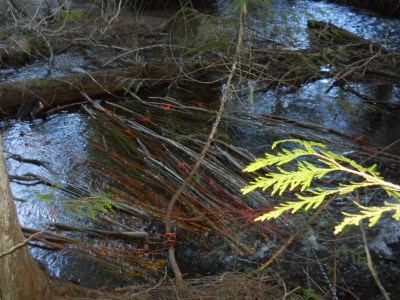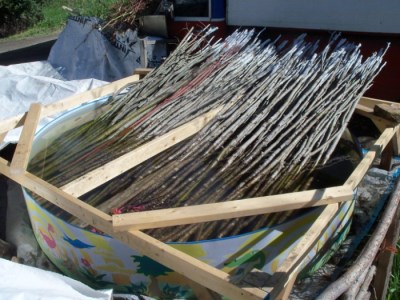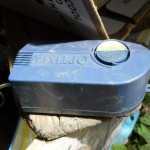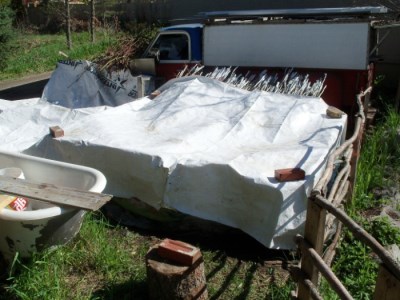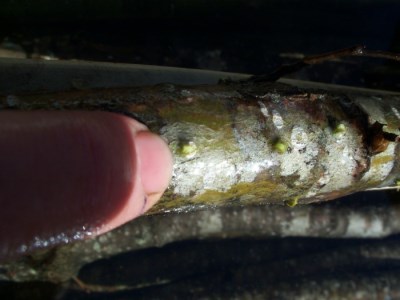Before planting live cuttings either directly on reclamation sites in soil or water bioengineering treatments, or in beds to produce TRS Cuttings, the material should be soaked for 1-2 weeks in clean, aerated water.
Research has shown that this is important. For example, USDA Researchers showed that for willow survival rates of cuttings can be doubled, and biomass production and root growth increased, by soaking for 10 days (see ref. 1 below). A similar benefit is expected for Cottonwood and Red-osier dogwood. Soaking ensures the cuttings are fully saturated with water when planted, and also stimulates the rooting process.
Bundles of live cuttings (Willow and Red-osier dogwood) pre-soaking in a creek. The bundles are tethered to a line in case the creek level rises.
Note that no beaver were present here. If beaver are present the cuttings must be protected within an enclosure.
It is not always convenient to to use a natural creek for soaking live cuttings. A large tank or pool can be used instead, providing there is either a constant flow of aerated water through the system, or mechanical aeration (bubbling) is provided.
I have also found that partial submersion works well too. The apparatus shown below came about through a need to soak very long cuttings using a tank (pool) of limited size. Here a $30 kids pool and wooden rack was used (with some heavy rubber lining the pool’s bottom). Willow, Red-osier dogwood and Cottonwood cuttings were all soaked in this way – with near 100% survival after planting to produce TRS Cuttings.
Kids pool soaking tank and rack.
A pond bubbler was used to keep the water aerated and fresh.
It is important to cover the exposed stems with a Silvacool tarp to prevent sunscald while the material is soaking.
I have kept cuttings for up to a month in such a system, to the point that root nodes began to appear. It is best to plant the material before this occurs as these nodes can be damaged during planting.
Reference Cited:
1) Soaking Willow Cuttings Helps Them Protect Streambanks. USDA publication (2000).

